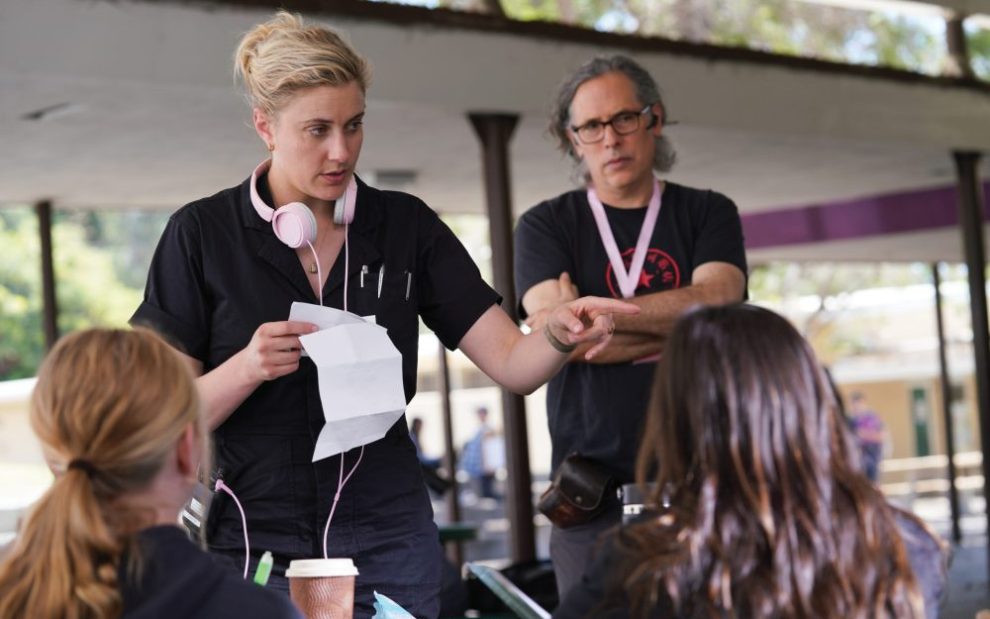Barbie has become one of the top 20 highest grossing movies of all time, surpassing all the Harry Potter films, all but one of the Star Wars films, and joining the likes of The Avengers and Titanic. Impressively, the director who has accomplished this, Greta Gerwig, has only directed two other films. Gerwig is also an auteur longtime screenplay writer deeply involved in the film industry as well as a feminist and critically acclaimed actress.
Gerwig’s films are a treasure trove of questioning, insight, and aesthetic delight. The panoramic-yet-all-too-observant Lady Bird, whose coming-of-age mother-and-daughter drama won actresses Saoirse Ronan and Laurie Metcalf much acclaim, was followed by Little Women, which enlivened and made relevant Louisa May Alcott’s classic novel for a new generation. Then came the blockbuster Barbie, which brought Mattel’s most recognizable toy to life, weaving together popular culture, fashion, comedy, song, and penetrating questions about human flourishing in an uplifting and hopeful manner. Each film has impressed with its observance of human experience and popular appeal. Barbie may be just the tip of the iceberg.
Gerwig is now the top-grossing female director of all time. When compared to the films with which Barbie keeps company on that impressive list, few tackle themes as salient as the ongoing consequences of patriarchy, the uniquely important relationship between mothers and daughters, and, surprisingly, discerning one’s ontological purpose. What can be missed in all of this, however, is Gerwig’s seamless integration of the role of faith and religion in everyday life.
Dare it be said that if a man had achieved an accumulated 200 international film awards for his first two films and then made one of the most successful films of all time, he would be a household name? Perhaps the familiarity of fighting her way up to and shattering the glass ceiling adds to the eloquence with which Gerwig is able to shine a light on the experiences and consequences of patriarchy. With an eye to the past, Little Women transports us to a time when women’s voices, hopes, and dreams were rendered trivial by the patriarchal norms of the day. The charming March sisters, amid these obstacles, struggle to forge their own paths based upon values and aspirations through the bonds of sisterhood and the love of family.
Gerwig’s films face these past and present realities head on with grace, authenticity, and a masterful sense of comedic timing. From an opening scene in Barbie where Lawyer Barbie reminds us that women are capable not only of balancing intellect and emotion but also wielding them as superpowers to an emotionally charged monologue that has been dubbed the “Womanhood Speech” that articulates with accuracy the double standards and challenges faced by women today, every moment Gerwig presents speaks to a deep reality and has the power to make women laugh or cry in self-recognition.
Feminine experiences, especially the unique relationship between mothers and daughters, are another focal point for Gerwig. In her debut film, Lady Bird, scene after scene grapples with this raw, real-life tension of love and angst. From the opening scene where we witness a tender, emotional connection that quickly devolves into argument, silence, and disconnect to a prom dress shopping scene at the thrift shop fraught with quarreling that quickly turns to affection as the perfect dress is pulled from the sea of racks, Gerwig beautifully conveys the rollercoaster ride that is a mother-and-teenage-daughter relationship.
Impressively, woven throughout this are the roles of faith and religion. Whether it’s Lady Bird making obvious religious associations with scenes in churches, Catholic schools, and characters speaking about God or the more subtle connections in Little Women, where themes of selflessness and loving sacrifice occur during Christmas, faith and religion are part of the fabric of Gerwig’s films. This is presented as part of a journey that not only leads to individual flourishing but connects the characters with something greater than themselves.
Often this requires some kind of letting go. In Little Women, Jo lets go of her dream to become a great writer to take care of her dying sister, only to have her sister give her the direction and inspiration for her authentic authorial voice. Likewise, Lady Bird discovers her authentic voice only after leaving her home and all she knows. It’s then she can claim not only the name her parents gave her but also the values she shares with her mother. As this happens right after attending Mass, it’s not too far a stretch to acknowledge, along with Catholic theology, that God desires our flourishing.
Gerwig has acknowledged the biblical influences on Barbie, particularly that archetypal story of journeying from innocence to self-awareness. Barbieland is visualized as an idealized yet artificial setting. When the veil is lifted, Barbie sees the harshness and cruelty that life can bring; however, she also appreciates breaking that artificiality. Throughout the story she discovers life’s depths, the hard-earned accumulation of wisdom, the beauty of aging, and so much more. Seeking her creator’s approval, Barbie then inquires if it’s OK to choose her own path. Ruth Handler lovingly broadens the context, emphasizing that Barbie’s growth and flourishing were always her primary concern. In this context a God who delights in the striving of her creation lies at the center of Gerwig’s religious vision, and this God speaks with a feminine voice.
With only three films to her name, Gerwig may only be setting the stage for her cinematic vision. Some of cinema’s greatest directors made their best films early in their careers. However, Gerwig’s insights, passion, and inquisitive mind suggest this may be just the tip of the iceberg. She has shown she can match bigger and more universal subjects with both popular appeal and nuance. Her own journey and flourishing might just lead to ours as well.
This article also appears in the January 2024 issue of U.S. Catholic (Vol. 89, No. 1, pages 36-37). Click here to subscribe to the magazine.
Image: © 2022 Warner Bros. Entertainment Inc. All rights reserved.













Add comment